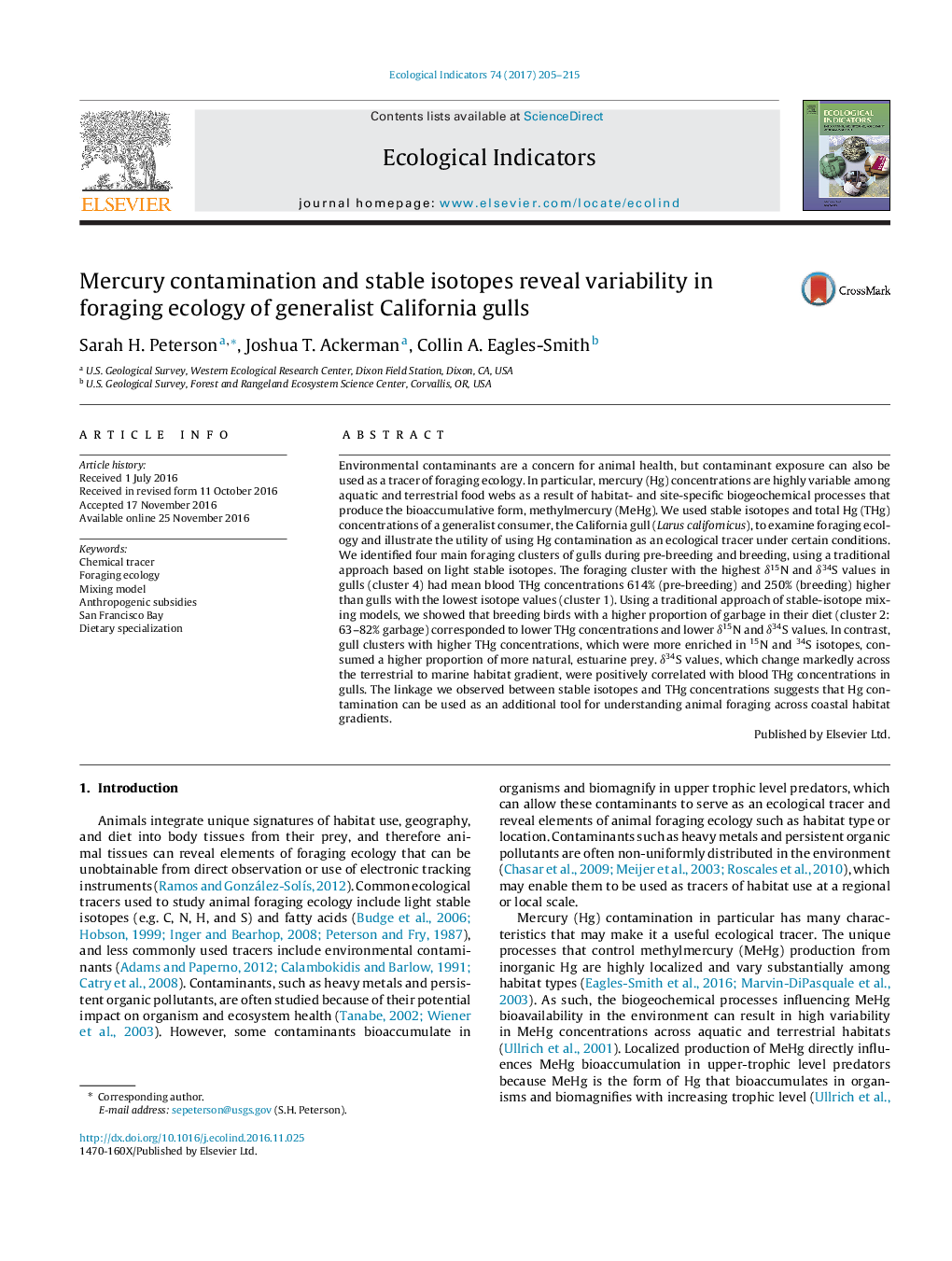| کد مقاله | کد نشریه | سال انتشار | مقاله انگلیسی | نسخه تمام متن |
|---|---|---|---|---|
| 5741849 | 1617128 | 2017 | 11 صفحه PDF | دانلود رایگان |
- Mercury, while harmful as a contaminant, may be a useful ecological tracer of foraging ecology.
- California gulls clustered into four main foraging groups using stable isotopes.
- Foraging groups differed in their mercury contamination.
- δ34S values were positively related to blood mercury concentrations.
- Gulls with lower mercury concentrations had higher consumption of garbage.
Environmental contaminants are a concern for animal health, but contaminant exposure can also be used as a tracer of foraging ecology. In particular, mercury (Hg) concentrations are highly variable among aquatic and terrestrial food webs as a result of habitat- and site-specific biogeochemical processes that produce the bioaccumulative form, methylmercury (MeHg). We used stable isotopes and total Hg (THg) concentrations of a generalist consumer, the California gull (Larus californicus), to examine foraging ecology and illustrate the utility of using Hg contamination as an ecological tracer under certain conditions. We identified four main foraging clusters of gulls during pre-breeding and breeding, using a traditional approach based on light stable isotopes. The foraging cluster with the highest δ15N and δ34S values in gulls (cluster 4) had mean blood THg concentrations 614% (pre-breeding) and 250% (breeding) higher than gulls with the lowest isotope values (cluster 1). Using a traditional approach of stable-isotope mixing models, we showed that breeding birds with a higher proportion of garbage in their diet (cluster 2: 63-82% garbage) corresponded to lower THg concentrations and lower δ15N and δ34S values. In contrast, gull clusters with higher THg concentrations, which were more enriched in 15N and 34S isotopes, consumed a higher proportion of more natural, estuarine prey. δ34S values, which change markedly across the terrestrial to marine habitat gradient, were positively correlated with blood THg concentrations in gulls. The linkage we observed between stable isotopes and THg concentrations suggests that Hg contamination can be used as an additional tool for understanding animal foraging across coastal habitat gradients.
104
Journal: Ecological Indicators - Volume 74, March 2017, Pages 205-215
